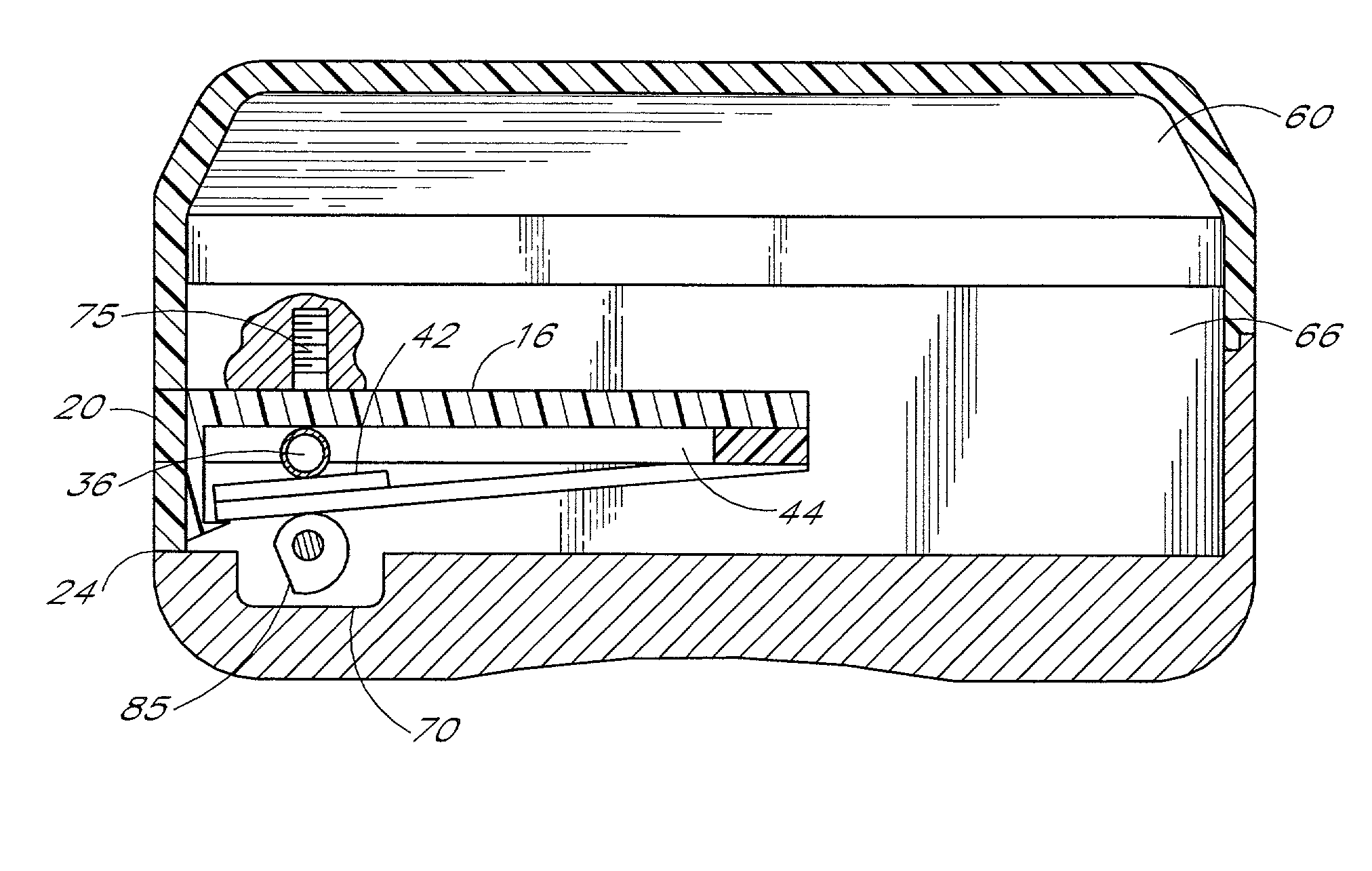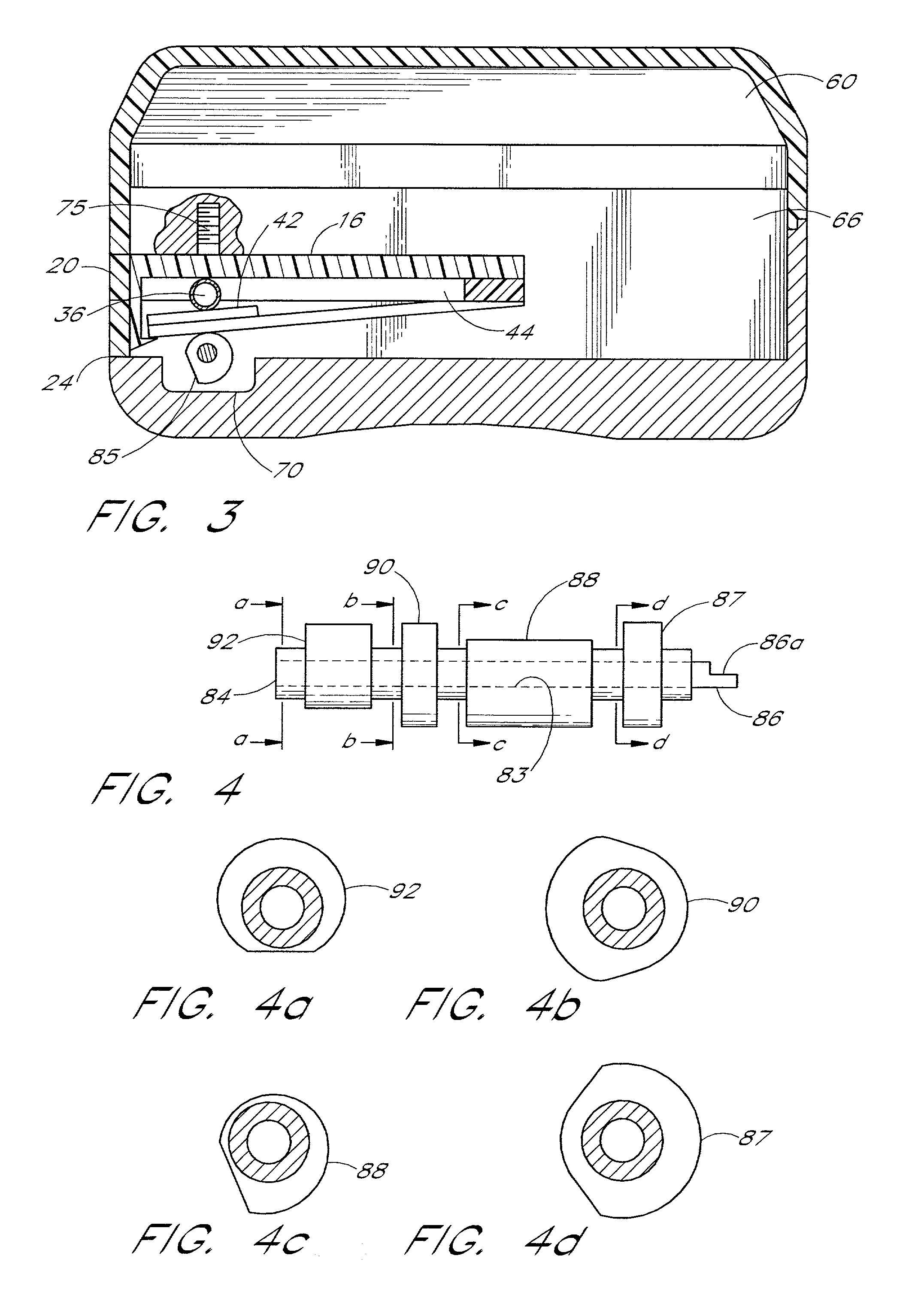Infusion device with disposable elements
a technology of infusion device and disposable element, which is applied in the direction of positive displacement liquid engine, process and machine control, instruments, etc., can solve the problems of pulsatile flow, clinical unsatisfactory, and undesirable condition, and the fluid flow to the patient is completely blocked
- Summary
- Abstract
- Description
- Claims
- Application Information
AI Technical Summary
Benefits of technology
Problems solved by technology
Method used
Image
Examples
Embodiment Construction
[0042] FIG. 1 illustrates the infusion device 10 of the preferred embodiment of the present invention for administering intravenous fluid at a consistent and uniform rate. The infusion device 10 is designed to be small, lightweight and ambulatory. The infusion device 10 includes a disposable administration set 12 having a plurality of cam followers 42 which are displaced in a predetermined sequence when depressed by a pumping mechanism 64 to squeeze a delivery tube 36 for dispensing fluid. The pumping mechanism 64 is driven by a commercially available motor 11 (not shown). Mounted within a housing structure 66, the disposable administration set 12 loads easily into the housing structure 66. Oriented directly above the housing structure 66 is an optional fluid reservoir 60 which provides a continuous flow of fluid to the inlet of the delivery tube 36 for dispensing and infusing fluid into a patient's body. Alternatively, the fluid delivery tube 36 may connect to an external reservoir...
PUM
 Login to View More
Login to View More Abstract
Description
Claims
Application Information
 Login to View More
Login to View More - R&D
- Intellectual Property
- Life Sciences
- Materials
- Tech Scout
- Unparalleled Data Quality
- Higher Quality Content
- 60% Fewer Hallucinations
Browse by: Latest US Patents, China's latest patents, Technical Efficacy Thesaurus, Application Domain, Technology Topic, Popular Technical Reports.
© 2025 PatSnap. All rights reserved.Legal|Privacy policy|Modern Slavery Act Transparency Statement|Sitemap|About US| Contact US: help@patsnap.com



